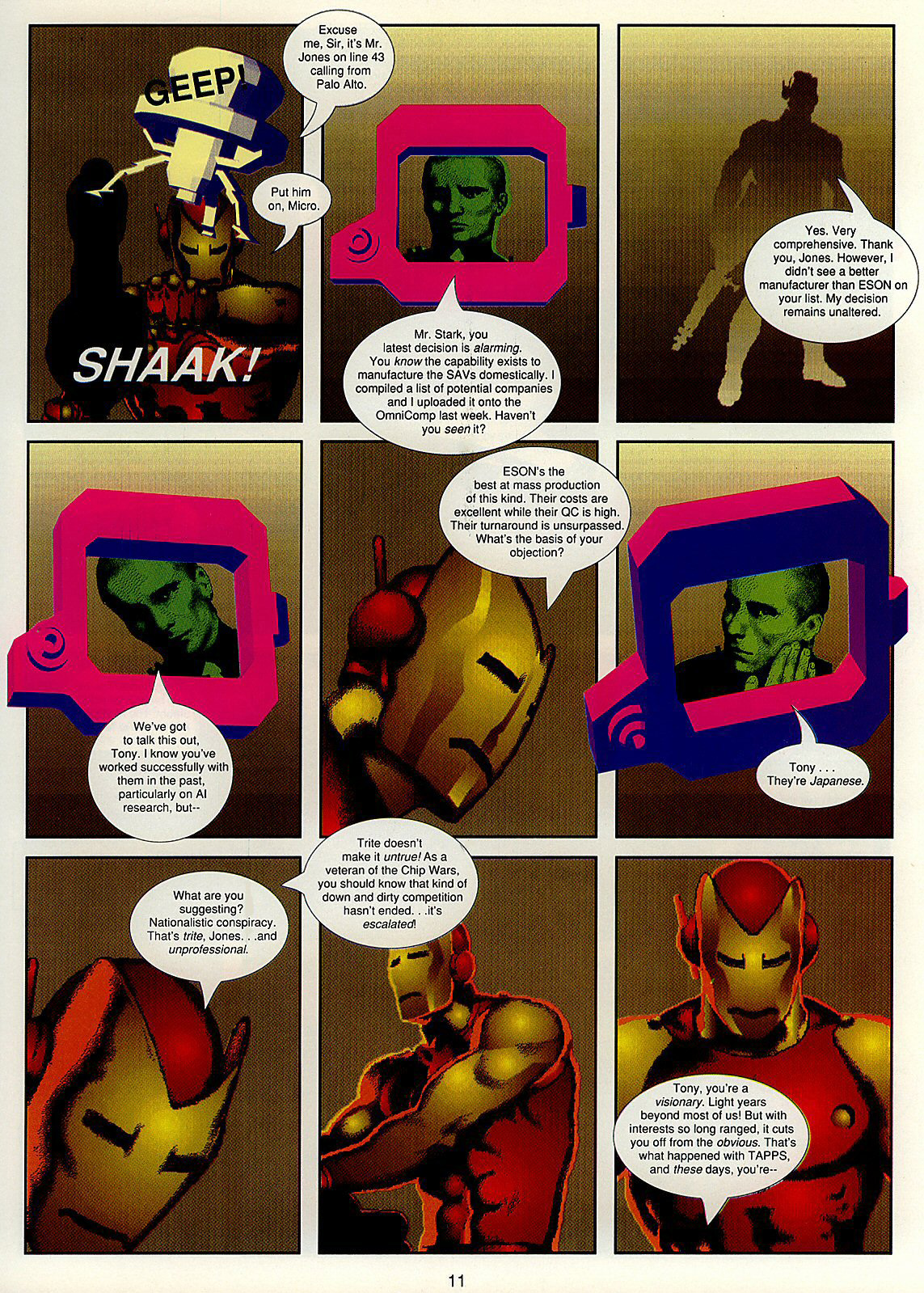Welcome to the “Iron Man: Crash” graphic novel database review entry. Journal log: 6-4-25. This data upload processes 1980s comics history: Sub context: 1988.
Reflection: the 1980s — a decade of big hair, neon lights, and comic book experimentation. Things got weird through experimentation. Comics were deviating from their established trajectory. Boy Scout capes and giant S-chest crusaders were getting dirt on their shoes and mud in their eyelashes. Jimmy Olsen wasn’t fun anymore. Not as much as what was coming down the pike. Standard media-friendly units were on the way out, like the feather pen. Enter a deeper, darker, more creative, and engaging age—thought-provoking concepts and heroes who maybe weren’t so heroic after all. If the hair metal radio pop of Def Leppard, Poison, and Winger set the stage for the grunge era of Nirvana, Alice in Chains, and Soundgarden, then perhaps it was not only the emerging visual aesthetic of 1980s alternative comic styles but also their abstracted, dystopian, and cyberpunk storytelling and dialogue—rich with dark, atmospheric, and gritty tones—that helped usher it in. Legends like Alan Moore, with “Watchmen,” and Frank Miller, with “The Dark Knight Returns,” offered gritty, artsy stories that showed comics were maturing. Indie creators like Art Spiegelman (“Maus”) and the Hernandez brothers (“Love and Rockets”) pushed comics into wild, new exploratory realms, making them emotional, complex, and mind-bending. To echo a line reflective of 1989’s “Bill and Ted’s Excellent Adventure”: Ted (“Theodore”) Logan’s—Like totally rad dude!”
“Data-support-proximity”— Stage left: please find “Iron Man: Crash” (1988)—the first comic book made with a computer. The story follows Iron Man as he navigates a fractured, dystopian world filled with alien technology and internal conflict, struggling to uncover the truth behind a mysterious crash that threatens humanity’s future. Mike Saenz and Bill Bates (not Gates) used Apple’s then-new Mac II and a blend of 3D, Bézier curves, and bitmap graphics to create this marvel of digital art. Cutting-edge for its time. And with it comes a story that has an odd, world-like quality to it. Distant loneliness and disjointed dialogue. It drags a bit, but there’s more going on here.
The execution of the first computer-generated graphic novel has been said to have fallen short of perfection in expectation. However, the tech-enhanced delivery never promised “Titanic” perfection. Looking forward to the future world of the USA from 1988, through the eyes of that era, was a mystery, and that lends to the overall aesthetic. It scared me. And the unique delivery is everything I don’t like about the New Marvel and “Star Wars” movies. This is no cookie-cutter, boilerplate, glossy plastic Walmart offering for $19.99. This early experimentation is characterized by asymmetrical imbalances, inconsistencies, and an odd aesthetic value that ultimately boils down to a very unique perspective. At least it dares to venture into unknown regions, and in that, I find it interesting. It has an edge of alternative abstraction that requires the reader’s mind to fill in the gaps with their imagination.
The glitch in the system: Detractor complained that the styles didn’t exactly mesh particularly well. It was too pixelated and low-res looking. But again, this is precisely what lent to the mysterious wonder that could have been in my mind when I first read it at 16 years old. And I would have felt the same no matter what age. I recall being transported to a “Blade Runner”/“Max Headroom” contemplation. Critics continue to argue that the visuals sometimes appear to be competing for attention, making the story feel lost in a maze of pixels and shapes. However, the vagueness added to the tension. For me, the resolution was that even if the story was partially lost in the overall confusion of the interpolation between two distinct yet different forms of delivery, I had traveled somewhere new.
Today’s razor-sharp high-def makes it easy to look back in criticism, but this was 1988. The gritty look is what I seek out in movies and art, comics, and all that. This under-polished visual medium is in dire need in today’s over-plasticized Hollywood Marvel epics. The jagged edges with smudged bitmaps try to look smooth but just barely make it. High-DPI lettering and speech balloons seemed crisp but off harmony with the graphical composition. Again, this lends an alternative polarizing perspective within its contradiction. The aspects of the vibe gave off some serious “Max Headroom” glitchy energy mixed with an echo of the lines etched over the top of the 1977 “Hobbit” cartoon film. Scenes borrowed from histographical film reels. Retro digital weirdness.
The style, as seen throughout the panels, is characterized by its stippled shading made from numerous tiny dots, which feels rough and raw, as if a robot did it with a Picasso or Edvard Munch flair. Instead of clean and polished, it’s gritty and edgy, which gives the whole thing a kind of mechanical soul. It’s like early computer art trying to mimic the look of handmade art but with a digital twist.
Mood booster—“Iron Man Crash” feels a lot like it’s taking style notes from “Blade Runner,” the iconic 1982 film with the cold, rainy neon city that’s as lonely as it is grungey and deteriorated. The comic’s world is cold and harsh, with jagged, glitchy visuals that evoke a future where machines and humans blend, making it unclear what is truly real. So, digital comics started here, where pixels met the pen. “Iron Man Crash” is a fun, if flawed, time capsule. It’s more of a quirky pop culture artifact from the late ’80s than a timeless classic. But hey, sometimes being weird and different is its own kind of cool.
Pat Wise is the graphic designer at the Mountain Times.




